Realizing Children’s Rights in the United States of America

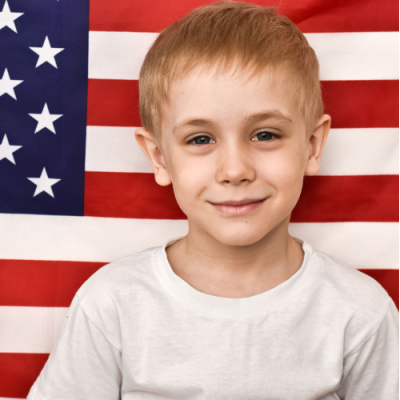
The United States of America’s failure to ratify the United Nation’s Convention on the Rights of the Child at a federal level has led to a large disparity in the treatment of children across its states. Children of colour and those living in poverty are disproportionately affected by a number of state-permitted practices which violate international human rights law.

Children’s Rights Index: 8,72 / 10
Yellow level: Satisfactory situation
Population: 329.5 million
Pop. ages 0-14: 18.24 %
Life expectancy: 79.05 years
Under-5 mortality rate: 5.69 ‰
United States of America at a glance
The United States of America, abbreviated as U.S or U.S.A or also known as America, is a country in North America. After Russia, Canada and China, the U.S. is the fourth largest country in the world by geographic area. It is a federal republic consisting of 50 states of which 48 occupy the continent, and two sit off its shores: Alaska, located in the north-western extreme of North America, and Hawaii, an island in the mid-Pacific Ocean. The US shares a conterminous border with Canada to the north, the Atlantic Ocean to the east, Mexico and the Gulf of Mexico to the south, and the Pacific Ocean to the west (Gopnik, 2022).
In addition to its 50 states, the U.S. has jurisdiction over five major regions: American Samoa, Guam, Puerto Rico, the U.S. Virgin Islands and the Northern Mariana Islands. These territories have their own local government, but they also follow the laws of the U.S. federal government. In the 1800s, the federal government moved to the Washington District of Columbia (D.C.) (Gopnik, 2022).
The three founding documents of the US are: (1) the Declaration of Independence, (2) the Constitution and (3) the Bill of Rights, collectively known as the Charters of Freedom. These documents are instrumental in the founding of the US (USAGov, 2022).
The Constitution divides the federal government into three branches: (1) the legislative, which makes laws and is comprised of the Congress, House of Representatives and the Senate; (2) the executive, which carries out laws and is comprised of the president, vice president, cabinet and a majority of federal agencies; (3) the judicial, which evaluates the laws and consists of the Supreme court and other federal courts.
The Supreme Court, the highest court in the country is based in Washington, D.C and is made up of nine members, who are responsible for deciding whether laws violate the Constitution of the US (USAGov, 2022).
Status of children’s rights [1]
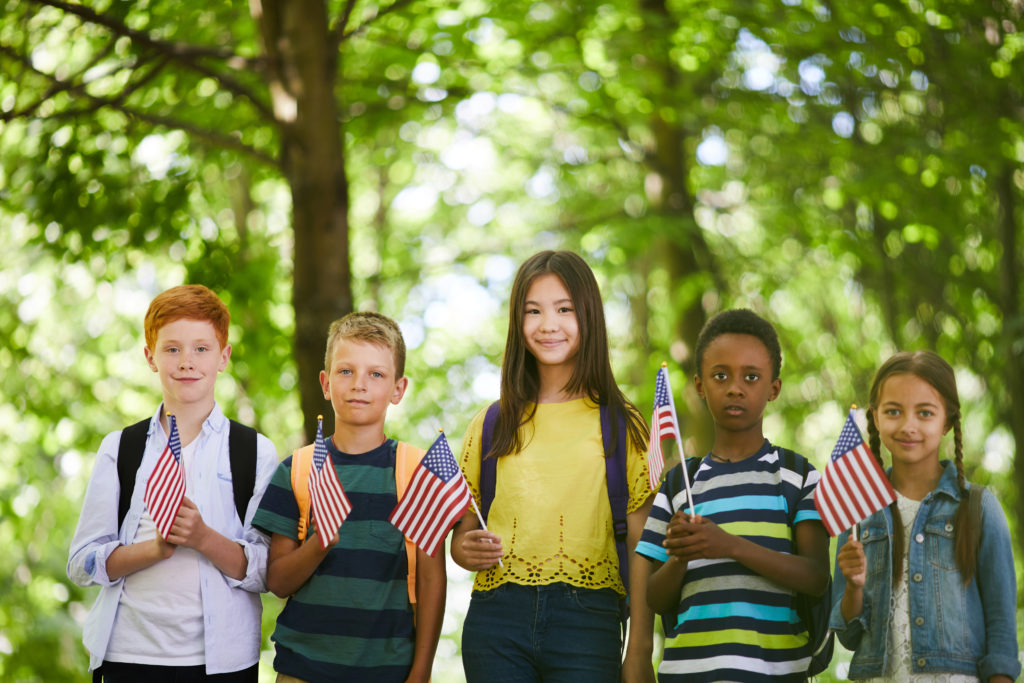
The U.S. has not signed or ratified several key international human rights treaties and is the only country in the world that has signed but not ratified the United Nations Convention on the Rights of the Child (UN CRC). Despite not ratifying the UN CRC, in 2002, the U.S. signed and ratified the Optional Protocol to the Convention on the Rights of the Child on the involvement of children in armed conflict and on the sale of children, child prostitution and child pornography.
The U.S. is party to other international human rights instruments such as the Convention against Torture and Other Cruel Inhuman or Degrading Treatment or Punishment which was ratified in 1994, the International Covenant on Civil and Political Rights ratified in 1992, and the International Convention on the Elimination of All Forms of Racial Discrimination which was ratified in 1994. Similar to Tonga, Sudan, Somalia, Palau, Nauru and Iran, the U.S. has signed but not ratified the Convention on the Elimination of All Forms of Discrimination against Women (CEDAW).
The protection and advancement of children’s rights in the US varies from state to state. Therefore, the issues addressed by the UN CRC is left to the jurisdiction of an individual state and not the federal government. As a result, protections vary from state to state and a majority of states fail to protect children and do not meet international standards (Human Rights Watch, 2022).
Addressing the needs of children
Right to education
In the U.S., there are four levels of education: (1) preschool (or early childhood education), for children between the ages of two and five; (2) elementary school, for children between the ages of five and ten (kindergarten – grade five); (3) middle school, for children between the ages of eleven and thirteen (grade six – grade eight) and lastly (4) high school, for children between the ages of fourteen and eighteen (grade nine-grade12). By law, all children are required to attend school and all public schools are free (USA Hello, n.d).
However, poverty and discrimination across the U.S. cripple the educational system. Children living in poverty or children of colour are more likely to lag behind their white peers academically when they begin school as well as throughout their academic progression. These large disparities also impact school funding, meaning that children in lower-income areas are likely to attend an underfunded school with fewer teachers, limited curriculum resources and student support, and larger class sizes.
Additionally, since the recession in 2008, a majority of states have cut funding for education. Since 2017, funding for kindergarten through to grade twelve in 22 states, including the District of Colombia has remained low (Children’s Defense Fund, 2021).
Children and their families are heavily dependent on school meal programs such as the National School Lunch Program (NLSP) and the National School Breakfast Program (SBP) as a result of poverty and food insecurity rising at alarming rates. The School Breakfast Program began as a pilot program in 1966 and became a permanent program in 1975. The SBP is a federally assisted meal program that operates at public, non-profit private schools and residential childcare institutions offering free or reduced-priced breakfast meals to eligible children (USDA, 2017).
The NLSP provides free lunches to school children and is operational in nearly 100,000 public and private schools, including residential childcare institutions across the country. Prior to the COVID-19 pandemic in 2019, the NSLP provided 4.9 billion lunches worth $14.2 billion (USDA, 2022). At the onset of the COVID-19 pandemic, NLSP school meals were disrupted, however, they were able to reimburse families for free or reduced-price school meals for the value of the NLSP meals through the Pandemic Electronic Benefit Transfer (P-EBT) program. In 2020, NLSP was able – and required – to provide 3.2 billion meals (USDA, 2022).
Right to health
In the U.S., large disparities exist in health insurance coverage. In 2018, it was estimated that over four million children under the age of nineteen did not have health insurance. The rates of uninsured children remain high for children from Hispanic backgrounds, children from families with a lower income, children living in southern states and undocumented children (Children’s Defense Fund, 2021).
Children’s Health Insurance Program (CHIP) and Medicaid is the national health insurance system for all children. In 2019, CHIP and Medicaid provided health care coverage for nearly 36 million children under the age of nineteen. Between 2016 and 2019, 726,000 children lost their health insurance (Children’s Defense Fund, 2021).
CHIP is a federal and state program that provides health care coverage for uninsured children, and children in families whose income is too high to qualify for Medicaid and too low to afford private health insurance. Medicaid provides health coverage for eligible low-income adults and children, is administered by the state according to federal requirements, and is funded by both the state and federal government (Children’s Defense Fund, 2021).
The U.S. has one of the worst infant mortality rates in comparison to other high-income countries, such as Japan and Finland. Currently, the most comparable countries to the U.S. infant mortality rates include Hungary, Lithuania, Poland, Slovakia, Croatia, Greece, Canada, Chile and New Zealand. Infant mortality rates are highest in Louisiana, Florida, Alabama, Georgia, South Carolina, North Carolina, Tennessee and Mississippi. Across states, infant mortality also varies by race and ethnicity, with higher rates of infant mortality among African American and Hispanic communities, reflecting a strong correlation between poverty and infant health (Rogers et al, 2022).
As of 2019, some of the leading causes of infant death in the U.S. included congenital malformations, deformations and chromosomal abnormalities, short gestation, unintentional injuries, low birth weight, sudden infant death syndrome (SIDS) and maternal complications during pregnancy. Unintentional injuries are the leading cause of death for children and young adults in the US aged 1 to 24, with injuries that include motor vehicle/cyclist accidents, drownings, drug overdoses/poisonings, suffocations and falls amongst others (Rogers et al, 2022).
Right to clean water and sanitation
It is estimated that approximately 2.2 million people in the U.S. do not have access to safe drinking water and adequate sanitation (The Independent, 2022). Across the U.S., many households face issues related to poor water quality, contaminated water, poor sanitation, incomplete plumbing and access to clean running water. This has posed a grave public health challenge.
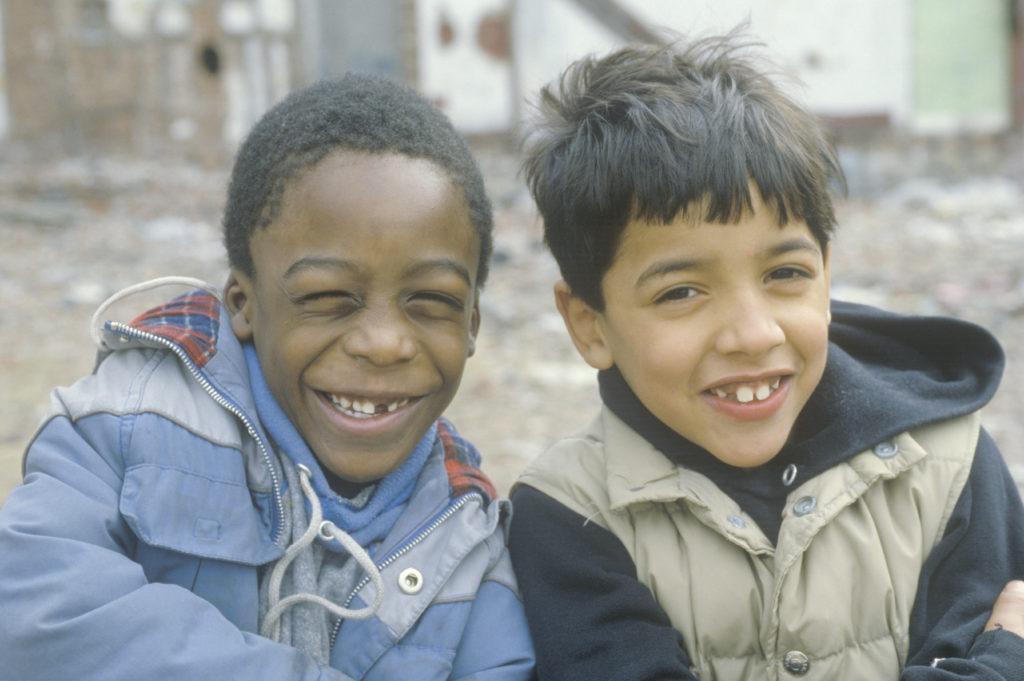
Data collected by the Environmental Protection Agency and the American Community Survey indicated that between 2014 and 2018, a total of 0.41% of households, or 489,836 homes lacked adequate plumbing and 1,165 community water centres were in breach of the Safe Drinking Water Act (Mueller & Gasteyer, 2021). People of colour and Native Americans living in low-income areas are more likely to have incomplete plumbing and poor water quality. The challenge of incomplete plumbing is more common in rural parts of the U.S. and the issue of poor water quality is more common in urban areas (Mueller & Gasteyer, 2021).
In 2017, the American Society of Civil Engineers rated the country’s drinking-water infrastructure a ‘D’, and proposed that the government needed to invest $1 trillion over the next 25 years to rectify the problems (Worland, 2020). In 2017, the United Nations ranked the U.S. as 36th in the world in terms of access to water and sanitation. It was also estimated that approximately 77 million Americans consumed water meeting one or more violations of the federal Safe Drinking Water Act (Klasing, 2020).
One of the most prominent examples of the country’s water sanitation issue can be seen in Flint, Michigan where, in an attempt to save money in 2014, the city switched its water supply away from Lake Huron and towards the Flint River. The corrosive nature of the river’s water caused national pipes to leak, leading into the city’s water system, and leading to a sanitation crisis (BBC, 2016).
In 2015 investigations by Virginia Tech and the Environmental Protection Agency (EPA) affirmed the dangerous levels of lead in the water, a risk that can lead to severe heart, kidney and liver ailments (CNN, 2021). Lead exposure can further impair child cognition and stifle development. Given the new water system’s dangers, the state was charged with a class action lawsuit for failing to treat the water in violation of federal law.
Separately, in Alabama, racial inequality and poor infrastructure have left some residents suffering from sewage problems and the leakage of human faeces into their backyards. Within many houses in low-income areas, when the toilet is flushed inside the home, waste travels through a 10-foot pipe into the backyard. Local governments often fail to pay to build adequate infrastructure to connect these pipes to proper waste disposal lines (Worland, 2020). Also in Utah, New Mexico and Arizona, approximately 300,000 people do not have access to clean water due to the high presence of uranium which has caused infections, cancers and even death (Worland, 2020).
Right to identity
The U.S. is one of 33 countries globally that permit unrestricted ‘birth right citizenship’, which means that any child born within the country’s borders is automatically granted American citizenship, regardless of the legality of their parents’ immigration status (World Population Review, 2022). Birth right is a prerequisite necessity for children’s access to an array of vital social services.
Unrestricted birth right citizenship can be traced back to the 14th Amendment which guarantees the right for all children born to permanent, temporary and illegal citizens or aliens (Feere, 2010). The latter category has been subjected to numerous critiques from predominantly Republican actors due to the large volume of immigrant births in the country.
In 2014 legal immigrant childbirths accounted for 12.4 % of all births, with illegal immigrant births represented 7.5% (Camarota, Zeigler & Richwine, 2018). 42% of legal immigrant mothers and 67% illegal mothers in the same year were uninsured or on Medicaid (Camarota, Zeigler & Richwine, 2018). Ultimately, this means the children’s survival was made possible by approximately $3.1 billion and $2.4 billion U.S. dollars in taxes respectively (Camarota, Zeigler & Richwine, 2018).
A few states across the country account for the largest number of births to illegal immigrants: California, Texas, Florida, Illinois, Georgia and New York (Camarota, Zeigler & Richwine, 2018). These and other states have been accused of facilitating ‘anchor babies’: the idea that migrant families use childbirth to ‘anchor’ their lives in the U.S. Despite calls to abolish unrestricted birthright citizenship, the Supreme Court has repeatedly protected the provision, citing the need to ensure all Americans have an accessible means to valid citizenship beyond just immigrants (Feliz, 2015).
The right ensures those impoverished across the U.S. can acquire citizenship without the need for documentation. The Supreme Court has further questioned the legitimacy of the ‘anchor babies’ claim, given a child born in the U.S. cannot sponsor a parent for citizenship until they reach the age of 21 (Feliz, 2015).
Risk factors 🡪 Country-specific challenges
Poverty
Data from 2021 indicates that roughly 10.5 million children are living in poverty in the U.S. This amounts to one in seven (14.4%) of the children in the country. Of these children, 71% come from Hispanic, Native American and African-American backgrounds, showcasing the divide in income and wealth inequality. For example, in 2019, the median family household income for white American households with children was $95,700, which was double that of African-American households at $43,000 while for Hispanic family households had an income of $52,300 (Children’s Defense Fund, 2021).
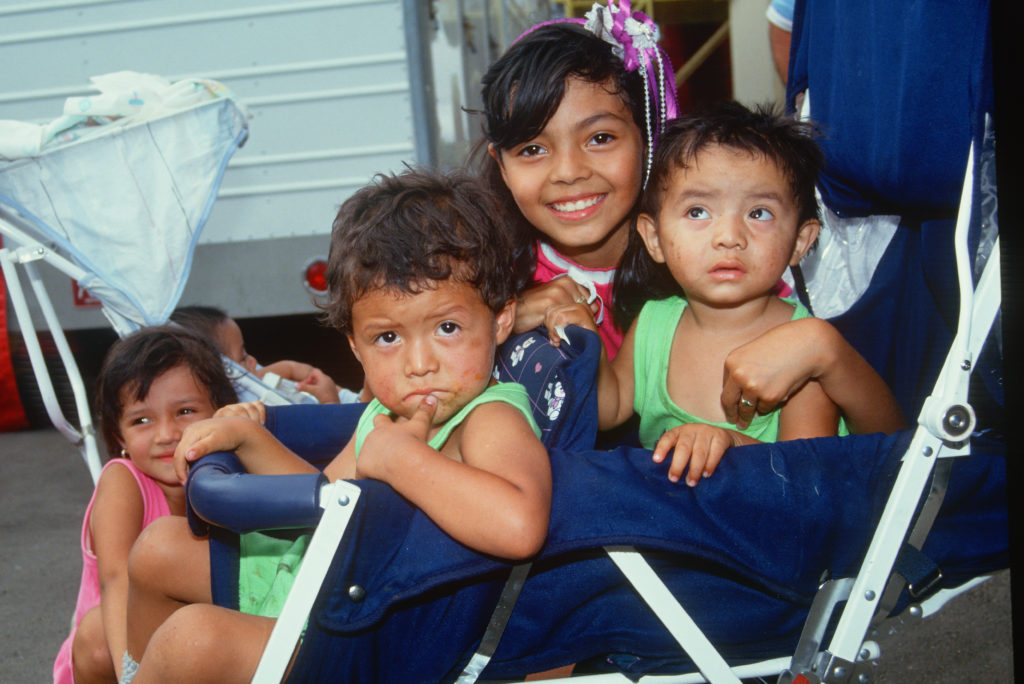
Living in poverty has left more than one among seven (10.7 million) children dealing with food insecurity, with African American and Hispanic children twice as likely to encounter this issue than white children. In 2018, the Supplemental Nutrition Assistance Program (SNAP) fed 17 million children, making up nearly a quarter of all children living in the U.S. In 2019, SNAP monthly benefits were deemed too low at an average of $118 per person, $4 a day (Children’s Defense Fund, 2021).
Children of colour are particularly vulnerable to poverty due to systemic racism and institutional barriers. In 2019, approximately 3.6 million children under the age of six were living in poverty. Statistics indicate that more than one in four (26.5%) of African American children were poor, in comparison to one in twelve (8.3%) white children and one in fourteen (7.7%) of Asian, Pacific Islander or Hawaiian children (Children’s Defense Fund, 2021).
Poverty and inequality vary between states, with dramatic differences in certain states and regions of the U.S. In 2019, 25% of African American children in poverty lived in 39 states including the District of Colombia, Hispanic children in 22 states and Native American and Native Alaskan children in 24 states. There were no states that had higher than 20% of white children living in poverty (Children’s Defense Fund, 2021).
Street children
Due to increasing levels of poverty, the lack of Federal rental assistance and affordable housing leaves millions of children across the U.S. at risk of homelessness. During the 2017-2018 academic school year, more than 1.5 million children who were enrolled in public schools experienced homelessness. Within that same school year, 74% of children were unhoused and living in temporary accommodation (Children’s Defense Fund, 2021).
Where African-American communities are afforded housing, they are more likely to face eviction or to be settled in dangerous and unsanitary areas. This is connected to the county’s historical segregation of housing and has led to an affordable housing crisis which resulted in 568,000 people being unhoused on a single night in January 2019, with almost 20% of them being children (Children’s Defence Fund, 2021). Though family homelessness declined by five percent between 2018 and 2019, California, Massachusetts and New York still face exceptionally high rates and host almost half of the country’s unhoused families with children (Children’s Defence Fund, 2021).
Discrimination
In the U.S., systemic racism and police violence disproportionately impacts the daily lives of people of colour. These communities often face unequal treatment when they engage in public systems such as health care, education, criminal justice and employment. Children from minority communities face disproportionate discrimination at the hands of police, school resource officers and the juvenile justice system (Mehrabi, 2020).
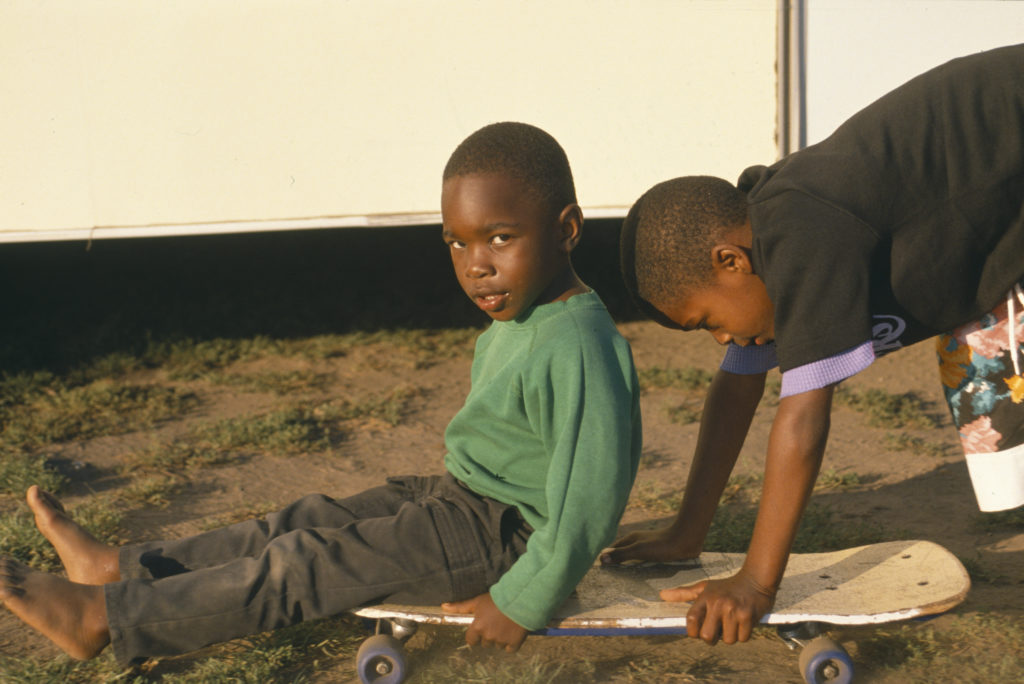
Early criminalization and the perception of minority children as more ‘adult’ than their white peers also expose them to violent interactions with law enforcement, causing heightened chances of physical, mental and developmental risks (Mehrabi, 2020). This continuous subjugation has resulted in a mental health crisis among minority children across the country beginning from an early age. Black students are, for instance, three times more likely to be suspended or expelled than white students (Mehrabi, 2020).
Institutional discrimination is present at local, state as well as federal levels. In 2019, the population of children in the U.S. was 73 million, of which 49.8% were children of colour and 50.2% (36.7 million) were white children. In addition to African American children, the former category is comprised of 25.6% (18.7 million) Hispanic children, 5% (3.7 million) Asian children, 615,950 Native American and Alaskan Native children and 147,057 Native Hawaiian and Pacific Islander children.
The states that had the highest rates of children of colour included Texas, New York, New Mexico, New Jersey, Nevada, Mississippi, Maryland, Hawaii, Georgia, Florida, Delaware, California, Arizona, Alaska and the District of Colombia (Children’s Defense Fund, 2021).
Violence against children
The main causes of death among children and young adults in the U.S. include physical injuries, suicides and homicides. Gun violence remains one of the leading causes of death for children in the U.S., with the highest rates affecting children from African-American backgrounds. In 2019, gun violence killed 7,580 children and young adults under the age of 25, with 39% of these being suicides and 61% being homicides. Young adults under the age of 25 made up one-third (32%) of all gun violence homicides in 2019 (Population Reference Bureau, 2022).
In 2020, according to the Center for Disease Control and Prevention (CDC), there were 45,222 gun-related deaths, of which 24,292 were suicides and 19,384 homicide cases. Data indicates that in the U.S., nearly 53 people are killed a day due to gun related violence. To add an international comparison of how fatal gun violence is in the U.S., in 2020, data indicated that there were 79% gun-related killings in the U.S., 37% in Canada, 13% in Australia and 4% in the United Kingdom (BBC, 2022).
In 2022 – according to the Gun Violence Archive, an independent data collection organization – there has been 33,764 gun-related deaths in the U.S., 18,282 by suicide and 15,482 homicide/murder/unintentional injuries. Gun-related violence this year has killed 1,008 children between the ages of 12-17 and left 2,899 injured (Gun Violence Archive, 2022).
Children and young adults in the U.S. between the ages of 15 to 24 are twice as likely to die from gun violence as their peers in wealthy countries such as Japan, Germany and France (Population Reference Bureau, 2022). Boys in the U.S. are more likely to die from homicides, suicides or unintentional injuries than girls, with the death rates three times higher for boys aged 20 to 24 than girls (Rogers et al, 2022).
Child abuse
The U.S. also faces a grave child abuse challenge. In 2019, 651,505 children were victims of abuse or neglect, equating to an incident every 48 seconds across the country (Children’s Defense Fund, 2021). Over half of these cases related to children under the age of six years old and nearly 15% to infants who had not reached one year (Children’s Defence Fund, 2021).
Over a quarter of a million of these children were placed in foster care which is deemed a last resort by the Family First Prevention Services Act of 2018 (Children’s Defence Fund, 2021). Though in its early stages of implementation, this act should provide states with additional funds to stabilise families and circumvent the need for foster care (Children’s Defence Fund, 2021).
According to the American Academy of Child and Adolescent Psychiatry, there are 19 states that allow corporal punishment. These states include Alabama, Arizona, Arkansas, Colorado, Florida, Georgia, Idaho, Indiana, Kansas, Kentucky, Louisiana, Mississippi, Missouri, North Carolina, Oklahoma, South Carolina, Tennessee, Texas and Wyoming. Each state is left to decide what form of corporal punishment is permissible. For example, in some states such as Texas or Alabama, a 24-inch wooden paddle is commonly used (Cox Media Group, 2022).
Child suicide
In the past decade, suicide rates in the US have been rising, especially amongst African American, Hispanic and Native American children and sexual minority adolescents. Adolescent suicides account for 14% of all suicides in the U.S. In 2019, for children aged 10 – 24, 342.5 per 100,000 children visited the emergency department for issues related to self-harm and 9% of high school students reported suicide attempts (Center for Disease Control and Prevention, 2022).
A National Center for Injury Prevention and Control 12-month survey revealed that in 2019, 18.8% of students across the country had seriously considered attempting suicide of which 24.1% were girls and 13.3% were boys. This survey found that race/ethnicity and sexual orientation played a role with 19.1% of white children attempting suicide, 16.9% of African American, 17.2% of Hispanic children, and 46.8% of LGBT children (Ivey-Stephenson et al, 2020).
To improve mental health through access to quality mental health services, the federal government established the Healthy People 2030 (HP2030) agenda. The main aim of the HP2030 is to improve the status of mental health, expand mental health services and increase screening. A part of the HP2030 agenda is to focus on suicide prevention (Office of Disease Prevention and Health Promotion, n.d). Suicides rates are highest in California, Georgia, Indiana, New Jersey, Oklahoma, Virginia, Ohio, Arkansas, Colorado, Montana, Alaska and Nebraska (Bendix, 2022).
Child marriage
Dissimilar to countries around the world where child marriage is illegal but persists, in the U.S., the problem remains that state and federal law fail to eliminate legal loopholes that allow for marriage before the age of 18. For example, the Federal Criminal Code prohibits sex with a child aged 12 to 15 but exempts those who first marry the child (Unchained at Last, 2021). This implicitly endorses child rape and incentivises child marriage.
Currently, in the U.S., 43 states still allow child marriage and 10 States do not specify any minimum age for marriage. Between 2000 and 2018, it is estimated that there were approximately 300,000 minors, some as young as 10, married in the U.S. (Unchained at Last, 2021).
In 2018, Delaware and New Jersey became the first states to ban child marriage in the U.S. In May 2020, Pennsylvania and Minnesota became the third and fourth states to ban child marriage (Tahirih, 2021). As of July 23rd, and 28th, 2022, New York and Massachusetts become the sixth and seventh states to end child marriage (Ibraj, 2022).
Research evidence in a report by the International Center for Research on Women, indicates that between 2000 and 2015, the top five states with the highest child marriage rates include, Texas (40,260), Florida (16,486), Kentucky (10, 618), North Carolina (8,781) and Alabama (8,657) (Steinhaus & Thompson, 2020).
Despite Virginia being the first state to restrict marriage to those over the age of 18 in 2016, it has not banned child marriage overall. Prior to the legislative change in Virginia in 2015, 182 minors were married and after the legislative change in 2017, 13 minors were married. In 2018, in states such as Texas, Kentucky, Ohio, Georgia, Virginia and Indiana, the legal minimum age of marriage is set at 18, with exceptions for 16- and 17-year-olds who have been emancipated by a special court (Tahirih Justice Center, 2021).
Since legislative reform in Virginia in 2016, 27 states have strengthened their marriage age laws. These states include Connecticut, New York, Texas, Arizona, Delaware, Florida, Kentucky, Missouri, New Jersey, Tennessee, Arkansas, California, Colorado, Georgia, Louisiana, Nevada, New Hampshire, Ohio, Utah, Idaho, Indiana, Maine, Minnesota, Pennsylvania, Rhode Island and North Carolina (Tahirih Justice Center, 2021).
Displaced children
Migrant and refugee children face grave human security risks on entering the U.S. The Remain in Mexico program, also known as the Migrant Protection Protocol (MPP) has left more than 20,000 children at risk of serious harm. The MPP sent more than 22,000 asylum-seeking children and their families to dangerous border cities in Mexico (Human Rights Watch, 2022). Poverty, gang violence, high homicide rates and natural disasters has been the driving force for children and families from Central American countries such as Mexico, Honduras, Guatemala and El Salvador to move to the U.S. (Cheatham & Roy, 2021).
An unaccompanied alien child (UAC) is defined under U.S. law as a migrant under the age of 18 who does not have a lawful status in the U.S. and who does not have any parent or legal guardian to look after them (Cheatham & Roy, 2021). In 2018, approximately 18 million children (1 in 4 children) lived with at least one immigrant parent. During April and June 2018, the Trump Administration’s, Zero Tolerance policy separated 4,500 children from their families. In June 2018, despite a court order to end the policy, a further 1,100 children were separated from their families between June 2018 and November 2019 (Children’s Defense Fund, 2021).
Under the Trump Zero Tolerance Policy, the Department of Justice began to criminally prosecute suspected illegal adults and families attempting to cross into the U.S. Though the former President and his team defended the neutrality of this process, the policy appeared to mandate that parents spent time in prison forcing their children to be de facto separated from their families (Human Rights Watch, 2018). However, the equity of this process is brought into question by the fact that the government disproportionately prosecuted those travelling as families or with children, a significant contrast to the previous administration (Human Rights Watch, 2018)
Juvenile justice
In the U.S., a disproportionate number of children from Hispanic, African American and Native American backgrounds are incarcerated in the juvenile justice and adult criminal justice systems. Between 2009 and 2019, 530,581 children in the U.S. were arrested. Children from African-American backgrounds are 2.4 times more likely to be arrested while children from Native American backgrounds are 1.5 times more likely to be arrested than white children. In 2019 alone, 696,620 children were arrested in the U.S. (Children’s Defense Fund, 2021).
Children of colour, particularly African American children, continue to be over-criminalized and transferred into adult criminal justice systems where they are tried and prosecuted as adults. African American adolescents are nine times more likely to receive adult prison sentences than their white counterparts, Native American adolescents are two times more likely and Hispanic adolescents 40% more likely (Children’s Defense Fund).
There are 25 states that do not have a minimum age for prosecuting children, 16 states have an age limit of 10 years old, 5 states have an age limit of 12 years old, while states such as Florida have an age limit of 7 years old and 8 years old in Washington (Corley, 2022). The U.S. remains the only country in the world that permits life sentences without parole for crimes committed before turning 18.
Despite this, the country has recognised in five Supreme Court cases that children are constitutionally distinct from adults in their level of culpability due to their maturity. Children are also protected against dying in prison by the Eighth Amendment on cruel and unusual punishment (Rovner, 2021).
Written by Vanessa Cezarita Cordeiro
Internally proofread by Aditi Partha
Last updated on 9 October 2022
References:
Ivey-Stephenson, A., Demissie, Z., Crosby, A., Stone, D., Gaylor, E., Wilkins, N., Lowry, R., Brown, M. (2020, August 21). “Suicidal ideation and behaviours among high school students – youth risk behaviour survey United States 2019.” Retrieved from Division of Injury Prevention National Center for Injury Prevention and Control, accessed on 28 September 2022.
Office of Disease Prevention and Health Promotion. (n.d). “Mental health and health disorders Healthy People 2030.” Retrieved from Office of Disease Prevention and Health Promotion U.S Department of Health and Human Services, accessed on 28 September 2022.
[1] This article by no means purports to give a full or representative account of children’s rights in the United States of America; indeed one of many challenges is the scant updated information on children in the United States of America, much of which is unreliable, not representative, outdated or simply non-existent.

